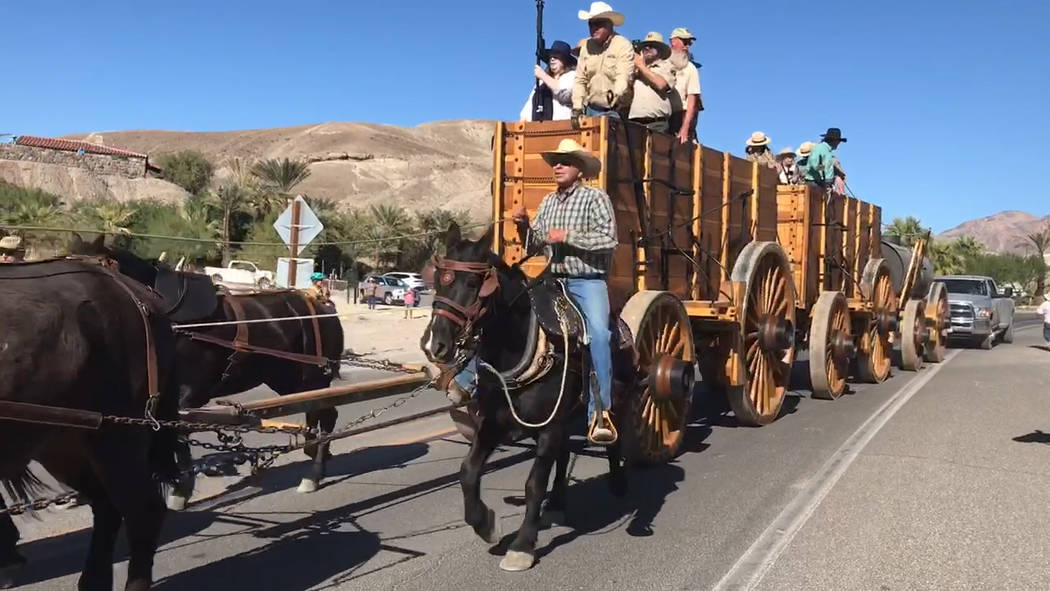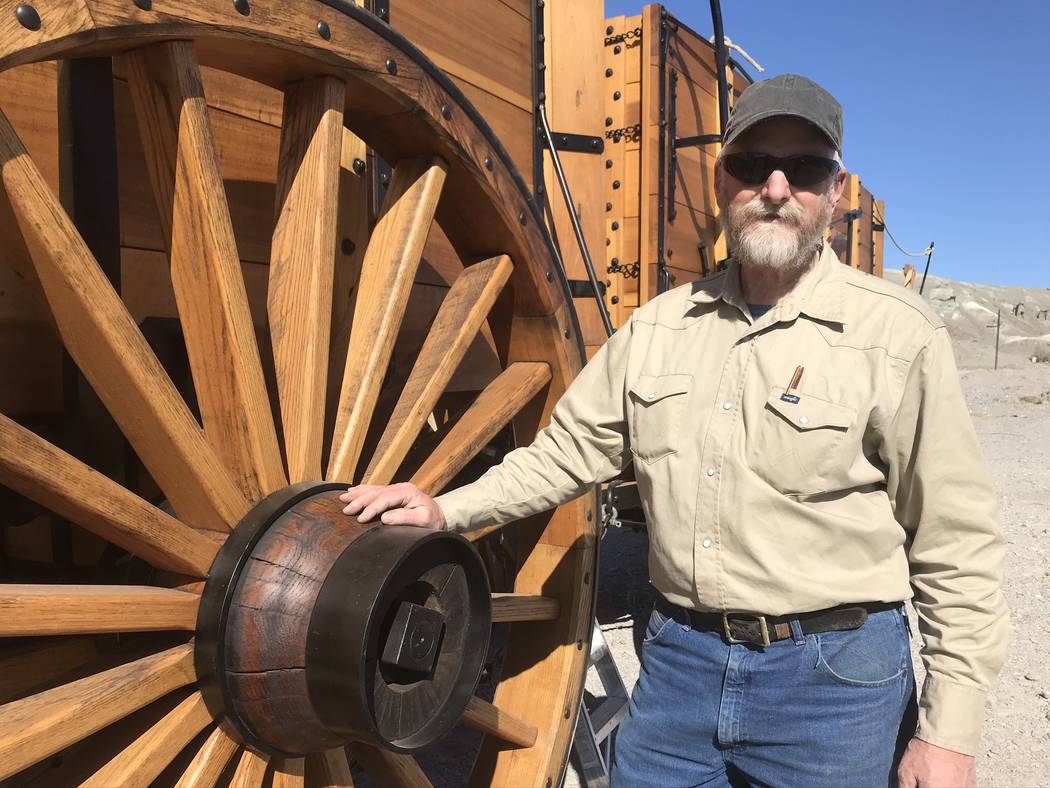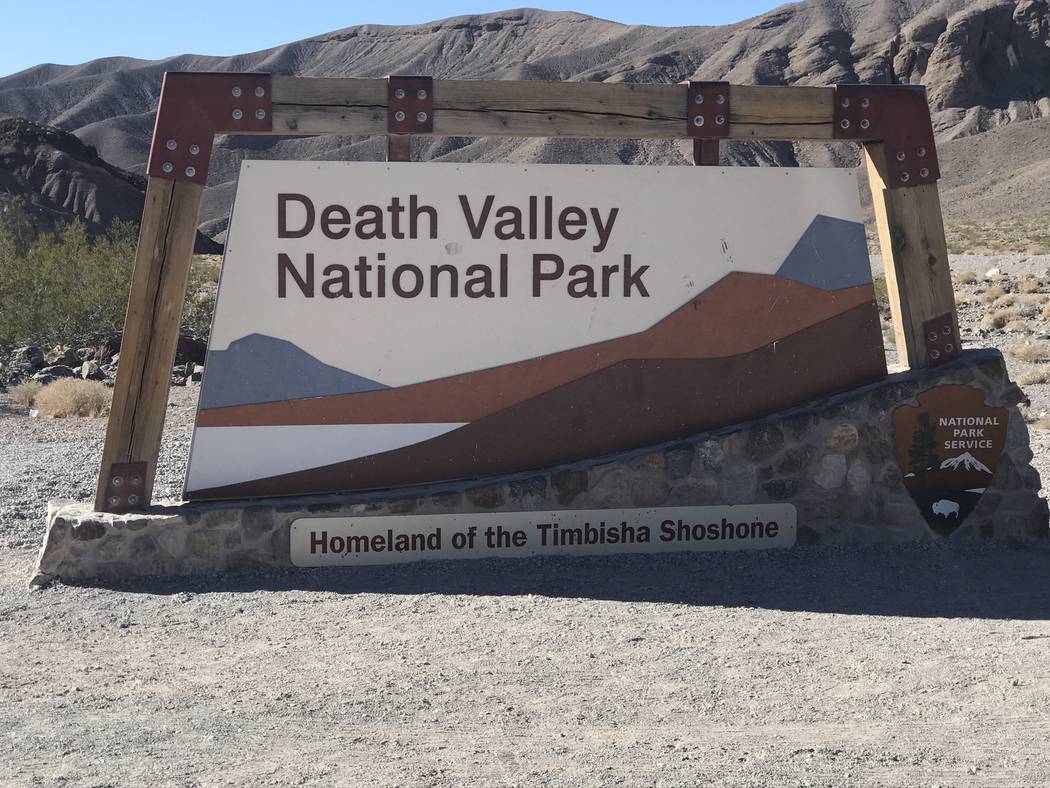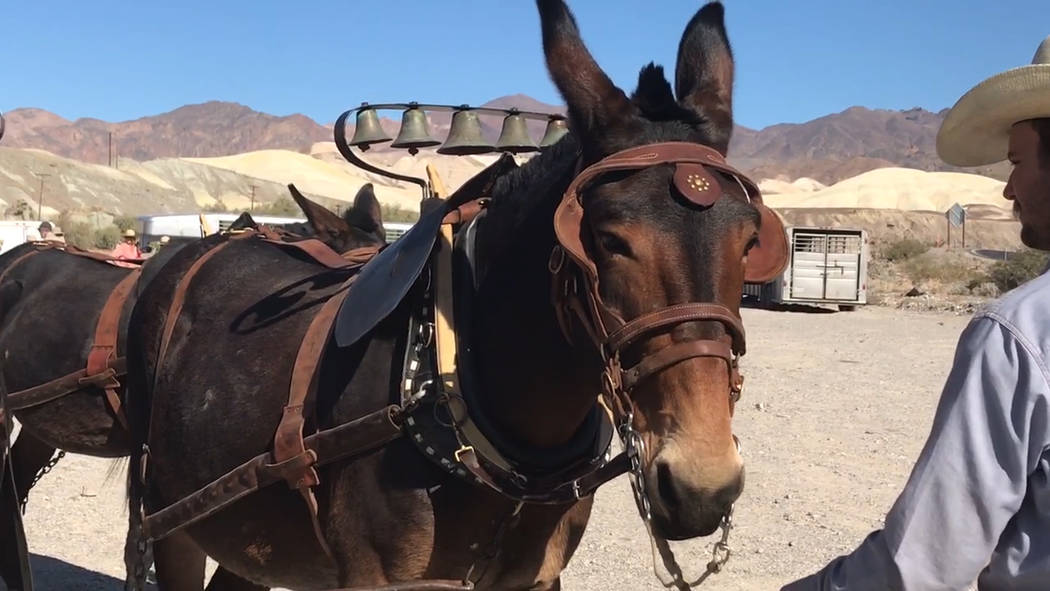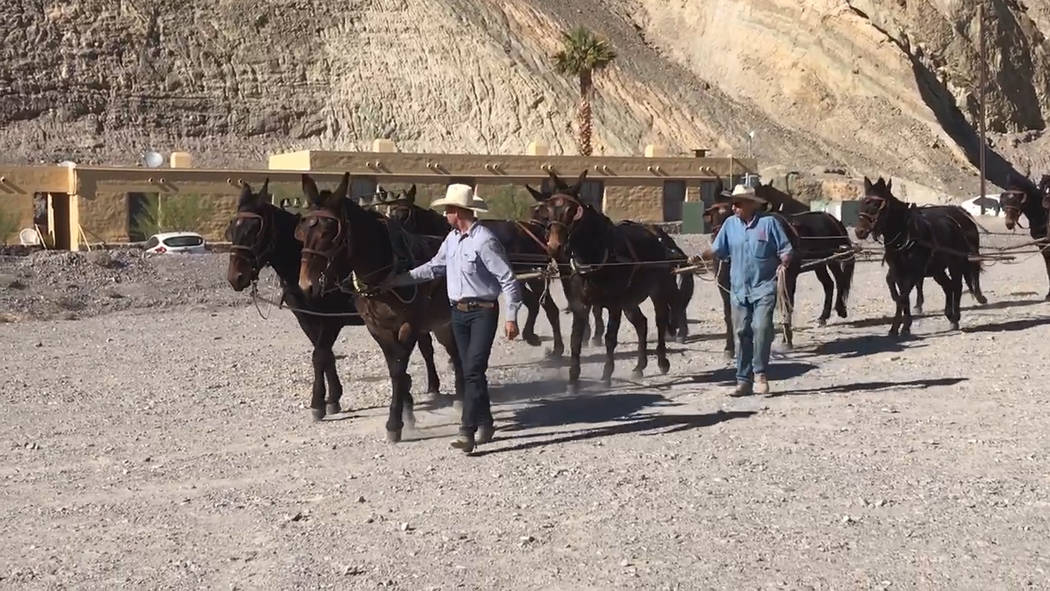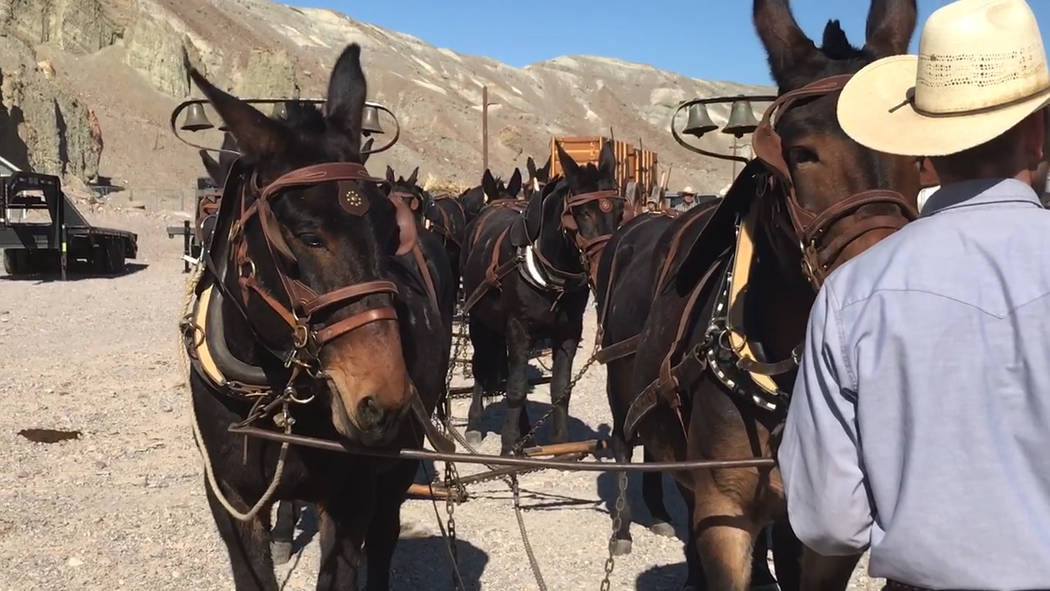20-Mule Team runs again during historic re-enactment in Death Valley
Several partners brought a scene from the Old West alive in Death Valley, California in early November.
“This past week was the 25th anniversary of Death Valley National Park, and the Death Valley 49ers, coincidentally, had their 70th annual encampment here, and so they invited us to bring the 20-Mule Team with our with our new wagons to Death Valley for the first time, said Preston Chiaro, Death Valley Conservancy president.
The conservancy and other partners worked to put on a re-enactment of what individuals in the late 19th century experienced during transportation of borax in Death Valley and the Mojave Desert. A team of 20 mules pulled two freight wagons and a water wagon that reached a length of 165 feet. The pull was to re-enact what the transporters and mules had done than 130 years prior, making their way across the desert landscape.
According to information in a news release from Death Valley National Park, teamsters used 18 mules and two horses to pull the borax and the mules drinking water over 165 miles across the desert and then on to the railroad at Mojave.
“The mule teams only operated in Death Valley for six years, but their legend lived on through the Death Valley Days radio and TV show, and the ‘20 Mule Team Borax’ brand,” the release stated.
“When they were hauling freight, they had 20 tons of freight, out of here, out of Death Valley: 20 tons of borax, 10 tons each wagon, so they had a much heavier load than what we put in,” said Bobby Tanner, owner of the 20 mules.
According to Tanner, the mules ran through the region in the early- to mid-1880s.
“After that, they moved out to the Barstow area,” Tanner said. “They freighted in up until 1906 in the Barstow area.”
Tanner was the driver of the 20 mules during each run, one per day, on Nov. 8-9, starting at The Inn at Death Valley on California Highway 190. Then the mules headed down to Harmony Borax Works and made their way back to The Inn.
Each wagon, a replica of those used over a century ago, weighed about four tons each. In addition, a third piece was a 1,200-gallon water wagon trailing behind.
A lot of preparation went into getting ready for each event.
“We will hitch over the next hour and a half or so, hitch the mules to the chain, the pull chains, for the wagons,” Chiaro said before the first run on Nov. 8.
“About 1 p.m., we’ll pull out of here and head down to Harmony Borax Works, which is about three miles away.
“We’ll turn around there, and the team will pull the wagons back here to this lot (at the Inn),” he said.
One lead mule that brings the rest through, the left-side mule, Tanner explained.
“That one mule (Mary) controls where the mule team goes,” he said.
“There’s a single line that goes all the way up to the front mule to that one,” Tanner said. “It’s called a jerk line. Give it a little jerk, it sends the mule to the right. You give it a pull, it sends the mule to the left.”
He continued: “Then the rest, they all follow in line, until we come to a turn, then there’s mules at the back of the hitch. when they’re on the inside of a turn, they know to step over the long chain that’s in the middle of the hitch.”
When the mules are not working in an event, they are being ridden by Tanner and tourists in the Sierra Nevada mountains. Tanner lives in Bishop, California, where he takes people on tours on his mules.
The round trip in Death Valley was a culmination of work by many people over the years.
“We have some very generous donors who gave us money to build these wagons.”
The freight wagons together were $300,000 with the water wagon running about another $100,000.
The project has also been in the works for some time.
“I first met Bobby 25 years ago, and we created a dream at that time that some day it would be nice to build a set of wagons like this,” Chiaro said. “But we began in earnest to gather donors in around 2010, I would say. It took us a while to raise enough money, a lot of funds to raise, but eventually we had enough to build the two freight wagons, and then we started a fundraising program for the water wagon.”
The funding all came from private donors. The event was also made possible by the Death Valley Conservancy, Tanner, the Death Valley 49ers and the Death Valley Natural History Association, according to information from a news release from Death Valley National Park.
The techniques used for building the wagons were the same methods used in the original period they were made to replicate.
The wagons were built by wagon maker Dave Engel, each taking months to build. The water wagon took more than five months to complete with the other wagons taking about 11 months, according to Engel.
The blueprint for the design of the wagons came from duplicating a set of original wagons at Harmony Borax Works in Death Valley.
As for the mules themselves, they’re quick studies.
“The mules, they learn it pretty quick,” Tanner said. “It’s kind of a disposition. Some mules have a disposition to be out front, some mules don’t want to be out in front. The mules pick it up quite quickly. We put them in the hitch and see what their disposition dictates they’re going to do and within a couple of weeks being in the hitch, they pick it up.”
Death Valley National Park celebrated its 25th birthday with special events running from Oct. 26 to Nov. 2, according to a news release from the park.
Also this month, the 70th annual Death Valley ‘49ers Encampment was at Furnace Creek from Nov. 6-9. The 49ers held several events during their encampment: history presentations, western music and cowboy poetry and other events.
Contact reporter Jeffrey Meehan at jmeehan@pvtimes.com On Twitter @MeehanLv
A closer look
See video coverage of the 20-Mule Team in Death Valley at pvtimes.com


